

Bridge of the Americas
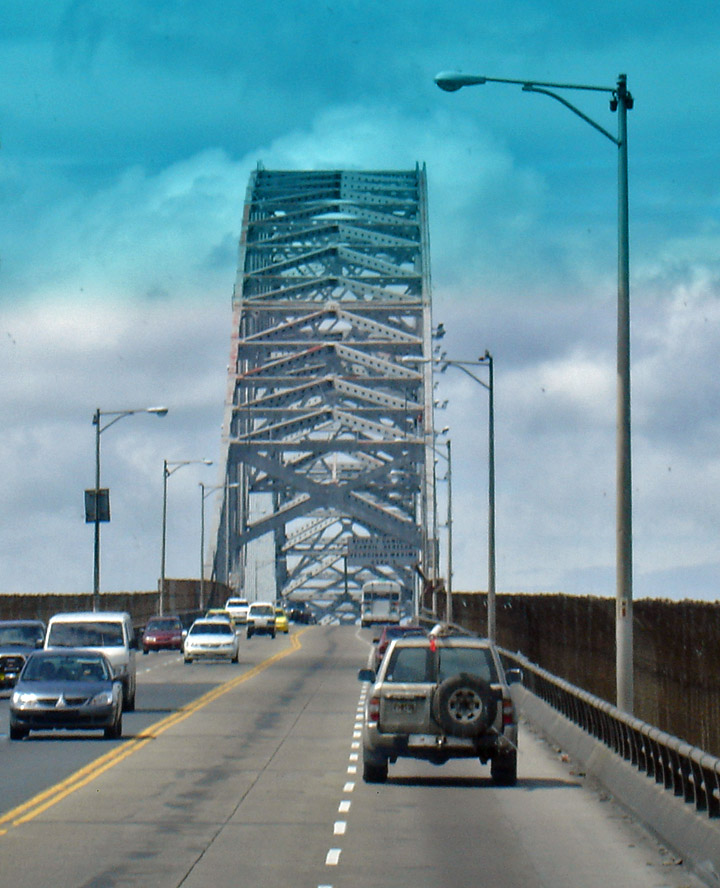
Bridge of the Americas
The Bridge of the Americas (Spanish: Puente de las Américas; originally known as the Thatcher Ferry Bridge) is a road bridge in Panama, which spans the Pacific entrance to the Panama Canal. Completed in 1962, at a cost of US$20 million, it was the only non-swinging bridge (there are two other bridges, one at the Miraflores locks and one at the Gatun locks) connecting the north and south American land masses until the opening of the Centennial Bridge in 2004. The bridge was designed by Sverdrup & Parcel.
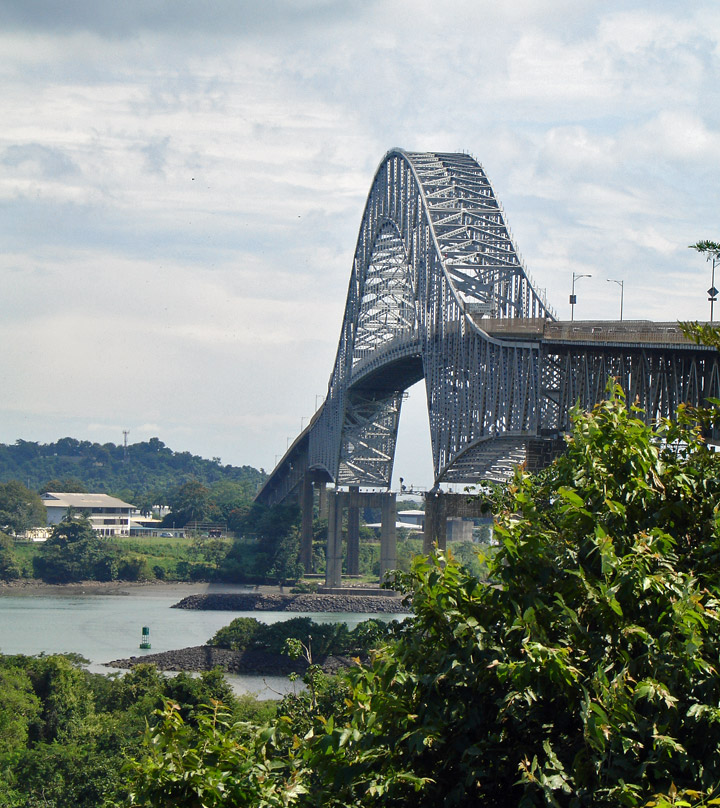
The bridge is a cantilever design where the suspended span is a tied arch. The
bridge has a total length of 1,654 m (5,425 ft) in 14 spans, abutment to
abutment. The main span measures 344 m (1,128 ft) and the tied arch (the center
part of the main span) is 259 m (850 ft). The highest point of the bridge is 117
m (384 ft) above mean sea level; the clearance under the main span is 61.3 m
(201 ft) at high tide. Ships must cross under this bridge when traversing the
canal, and are subject to this height restriction. (The Centennial Bridge is
also a fixed obstacle, but its clearance is much higher: 80.0 m (262 ft)).
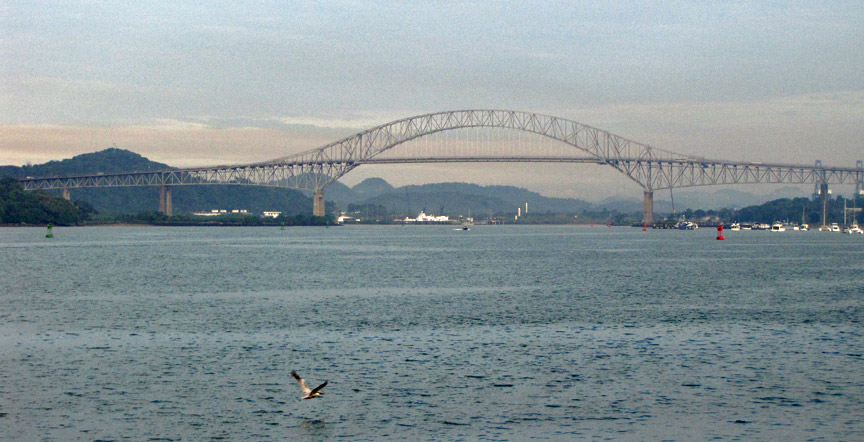
The bridge is an impressive sight, and a good view can be obtained from the
Balboa Yacht Club, where many small boats tie up before or after transiting the
canal. Throughout the day and night numerous vessels pass under the bridge,
either entering or departing from the Panama Canal. There are wide access ramps
at each end, and pedestrian walkways on each side.
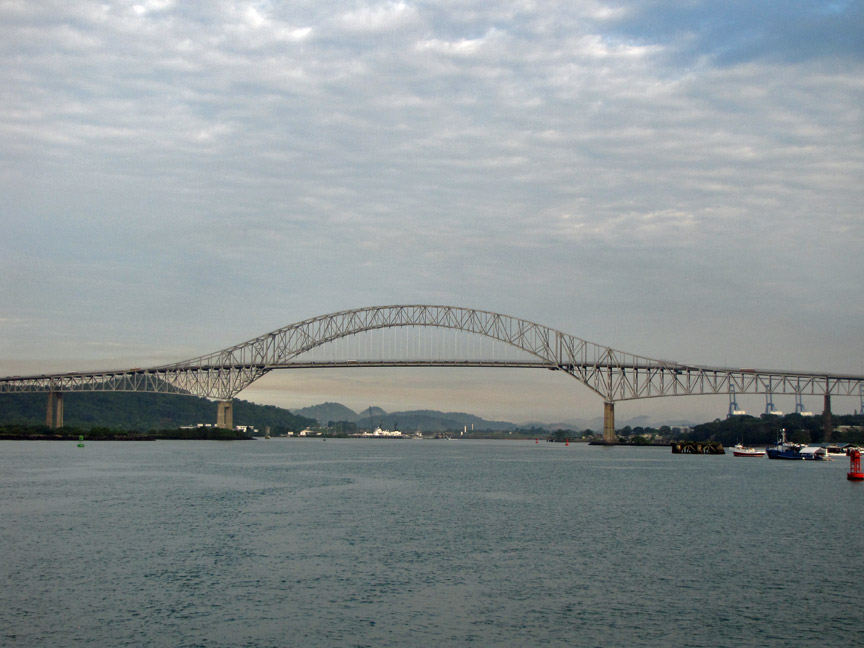
From the beginning of the French project to construct a canal, it was recognized
that the cities of Colón and Panamá would be split from the rest of the republic
by the new canal. This was an issue even during construction, when barges were
used to ferry construction workers across the canal.
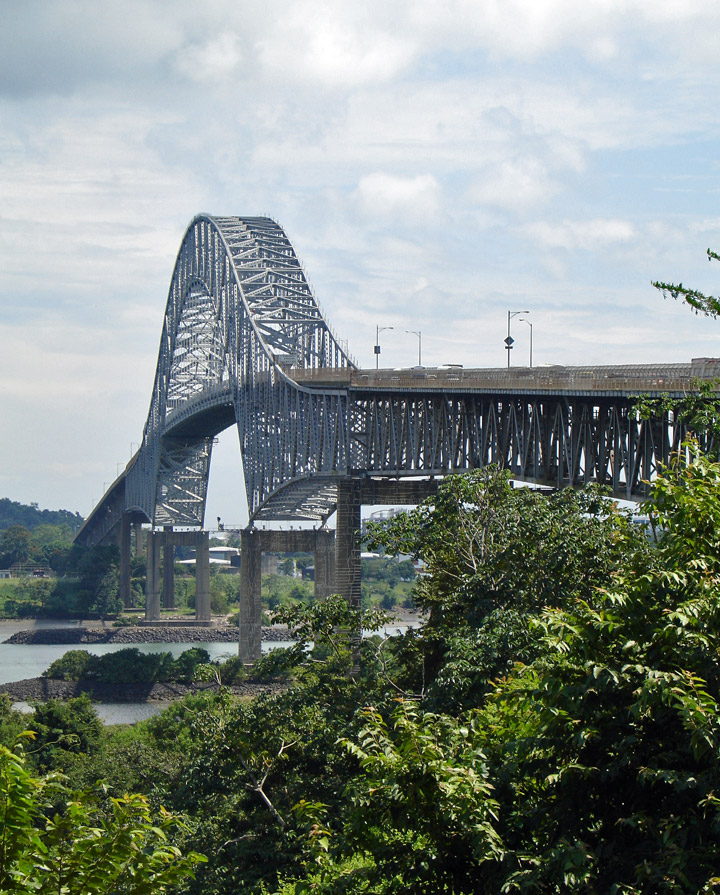
After the canal opened, the increasing number of cars, and the construction of a
new road leading to Chiriquí, in the west of Panama, increased the need for some
kind of crossing. The Panama Canal Mechanical Division addressed this in August
1931, with the commissioning of two new ferries, the Presidente Amador and
President Washington. This service was expanded in August 1940, with additional
barges mainly serving the military.
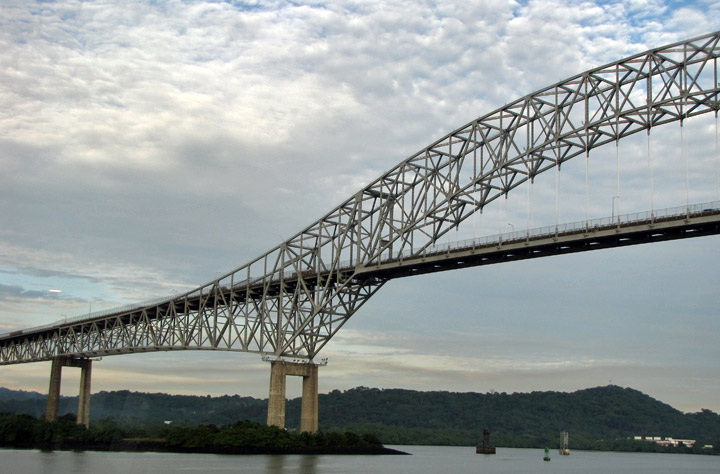
The idea of a permanent bridge over the canal had been proposed as a major
priority as early as 1923. Subsequent administrations of Panama pressed this
issue with the United States, which controlled the Canal Zone; and in 1955, the
Remón-Eisenhower treaty committed the United States to building a bridge.
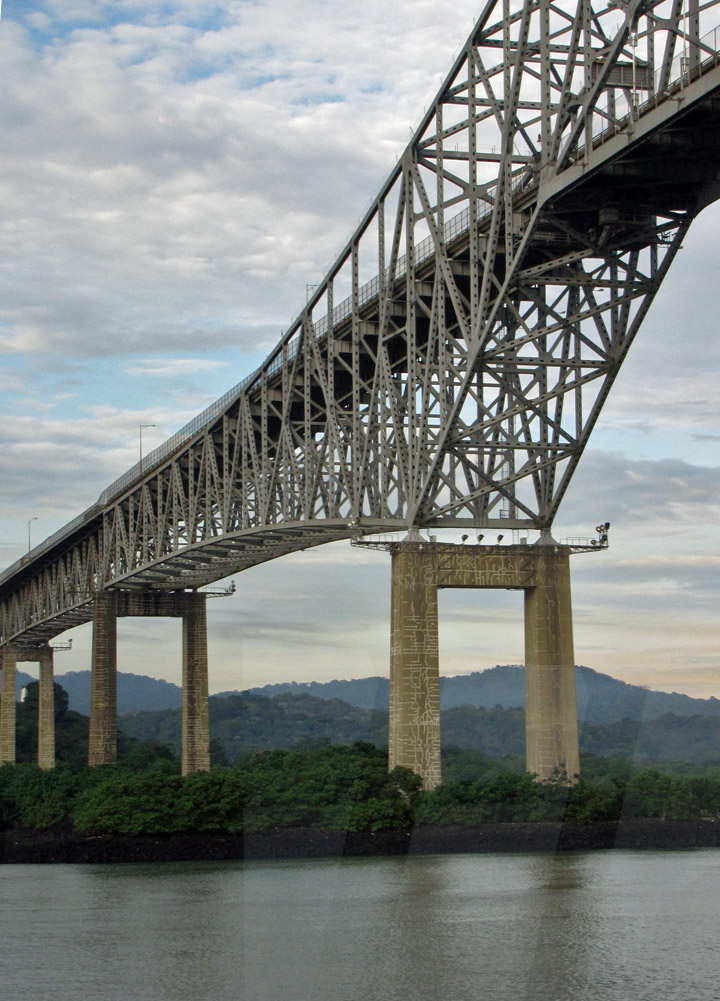
A contract of $20,000,000 was awarded to John F. Beasly & Company who built the
bridge out of steel and reinforced concrete, and the project was initiated in a
ceremony which took place on December 23, 1958, in the presence of United States
Ambassador Julian Harrington, and Panamanian President Ernesto de la Guardia
Navarro. Construction began on October 12, 1959, and took nearly two and a half
years to complete.
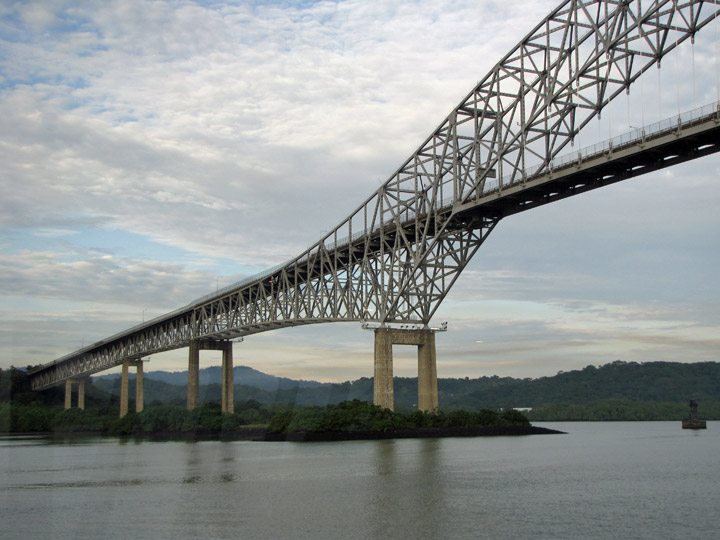
The inauguration of the bridge took place on October 12, 1962, with great
ceremony. The day began with a concert by the bands of the U.S. Army and Air
Force, and the Panama National Guard; this was followed by speeches, prayers,
music, and the national anthems of both nations. The ribbon was cut by Maurice
H. Thatcher, after which those present were allowed to walk across the bridge.
The ceremony was given full nationwide coverage on radio and television;
significant precautions were taken to manage the large crowds of people present.
These proved inadequate, however, and pro-Panamanian protesters disrupted the
ceremony, even removing the memorial plaques on the bridge.
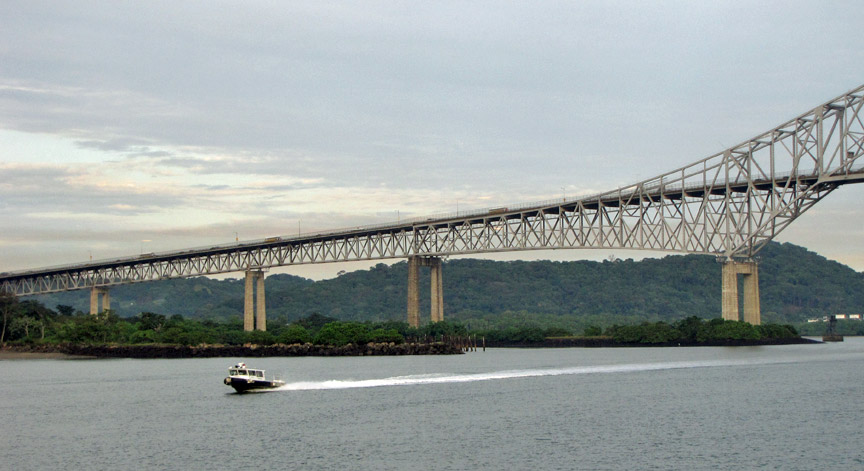
When opened, the bridge was an important part of the Pan-American Highway, and
carried around 9,500 vehicles per day; however, this expanded over time, and by
2004 the bridge was carrying 35,000 vehicles per day. The bridge therefore
became a significant bottleneck on the highway, which led to the construction of
the Centennial Bridge, which now carries the Pan-American Highway too.

the nearby Pacific side container port
The bridge was originally named Thatcher Ferry Bridge, after the original ferry
which crossed the canal at about the same point. The ferry was, in turn, named
after Maurice H. Thatcher, a former member of the canal commission, who
introduced the legislation which created the ferry. Thatcher cut the tape at the
inauguration of the bridge.
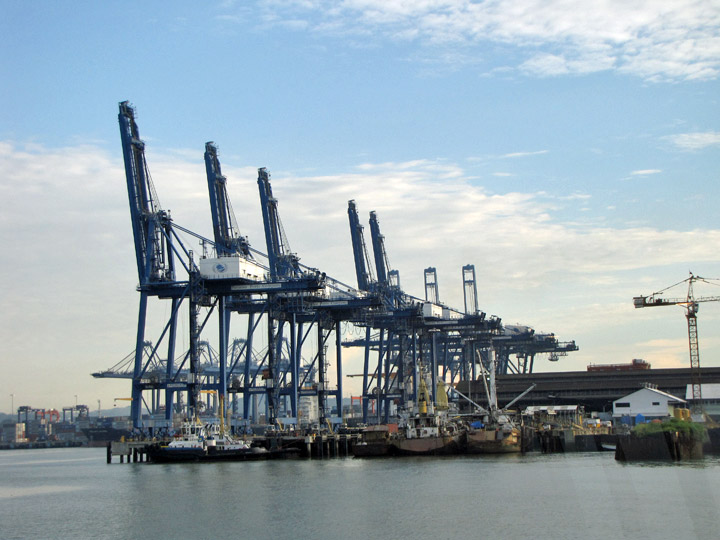
The name was unpopular with the government of Panama, however, which preferred
the name "Bridge of the Americas". The Panamanian view was made official by a
resolution of the National Assembly on October 2, 1962, ten days before the
inauguration.
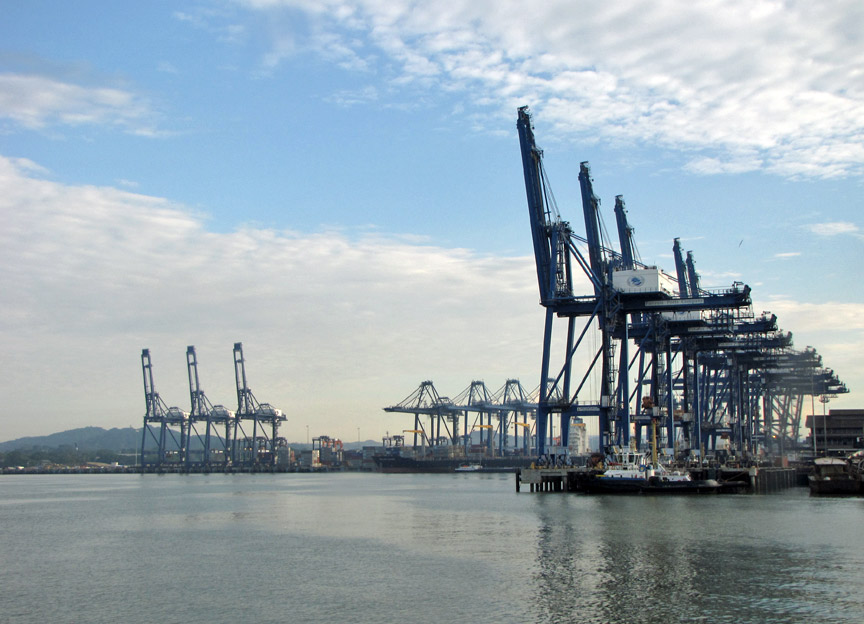
The resolution read as follows:
The bridge over the Panama Canal shall bear the name Bridge of the Americas.
Said name will be used exclusively to identify said bridge.
Panamanian government officials shall reject any document in which reference is
made to the bridge by any name other than "Bridge of the Americas".
A copy of this resolution, with the appropriate note on style, shall be
forwarded to all legislative bodies of the world, so that all may give the
bridge the name chosen by this honorable assembly, complying with the express
will of the Panamanian people.
Given in the city of Panama on the second day of the month of October of
nineteen hundred and sixty-two.
President, Jorge Rubén Rosas
Secretary, Alberto Arango N.

cranes working the containers
During the inauguration ceremony (which was concluded with the playing of the
"Thatcher Ferry Bridge March"), U.S. Under Secretary of State George Wildman
Ball said in his speech: "we can look today to this bridge as a new and bright
step toward the realization of that dream of a Pan-American Highway, which is
now almost a reality. The grand bridge we inaugurate today — truly a bridge of
the Americas — completes the last stage of the highway from the United States to
Panama".
Text from Wikipedia
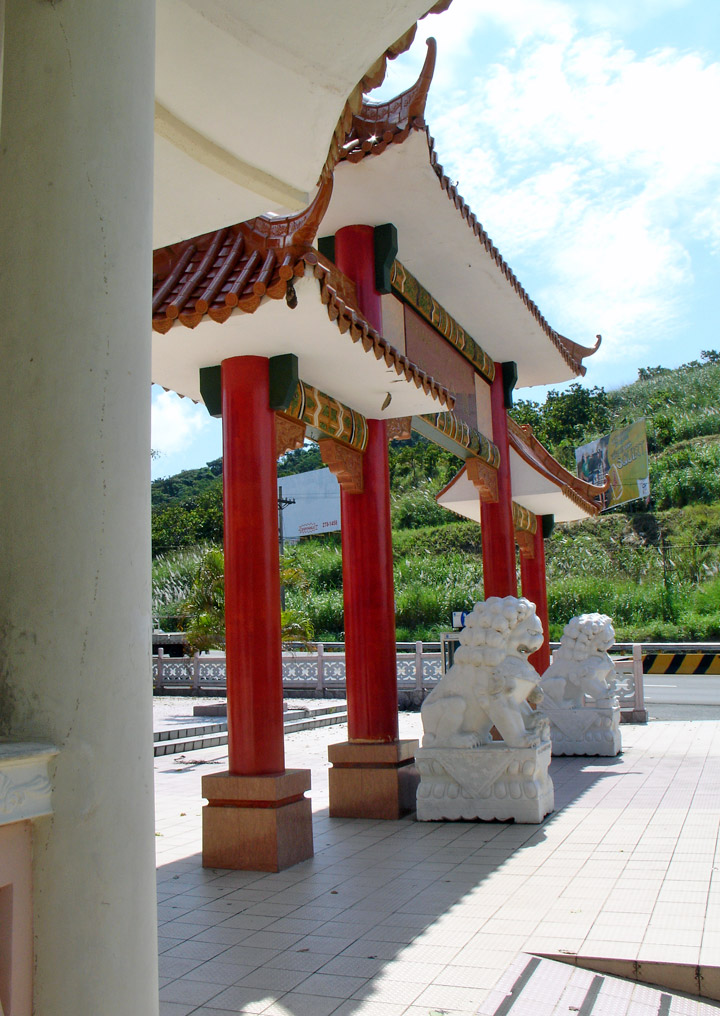
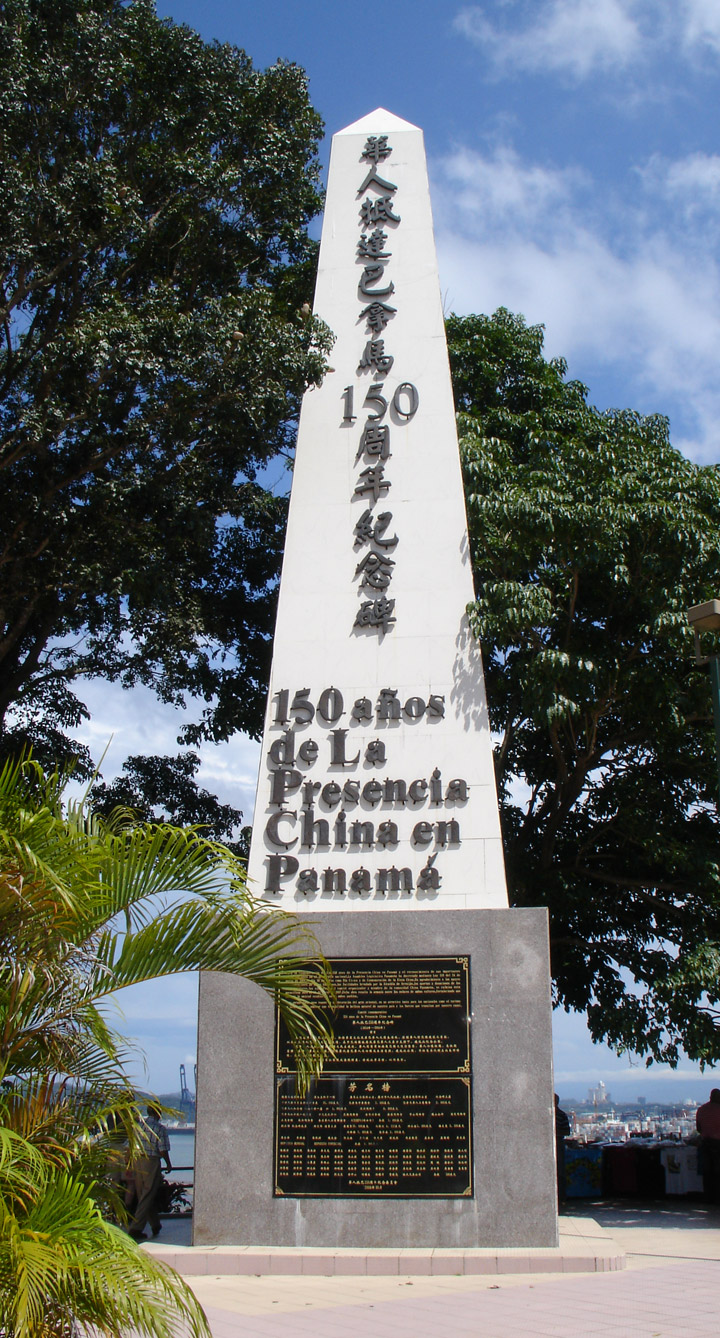
150 years of China in Panama
The Bridge of the Americas crosses the Pacific approach to the Panama Canal at Balboa, near Panama City. It was built between 1959 and 1962 by the United States at a cost of 20 million U.S. dollars. From its completion in 1962 until the opening of the Centennial Bridge in 2004, the Bridge of the Americas was a key part of the Pan-American Highway. The Bridge of the Americas greatly increased road traffic capacity across the canal. There are two earlier bridges which cross the canal, but they use moveable designs and have limited traffic capacity.
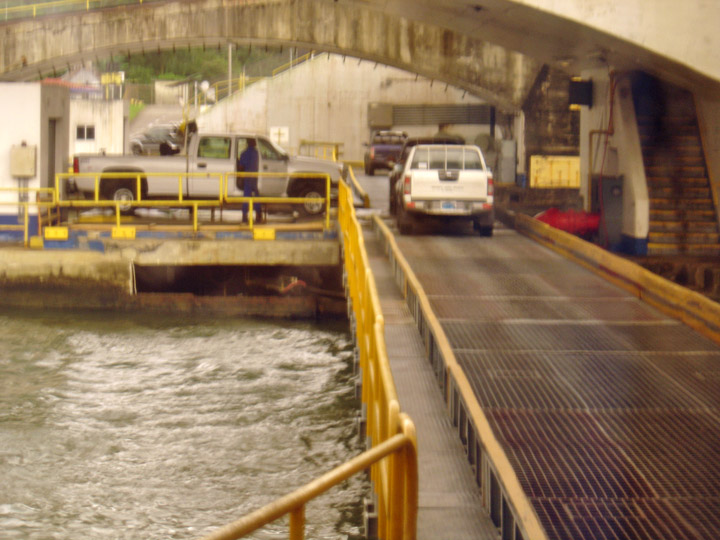
swinging road bridge built into the lock structure at Gatún
The earlier spans include a small swinging road bridge (built into the lock structure at Gatún) and a swinging road/rail bridge (constructed in 1942 at Miraflores.) The Centennial Bridge was constructed to eliminate this bottleneck and reduce traffic congestion on the Bridge of the Americas.